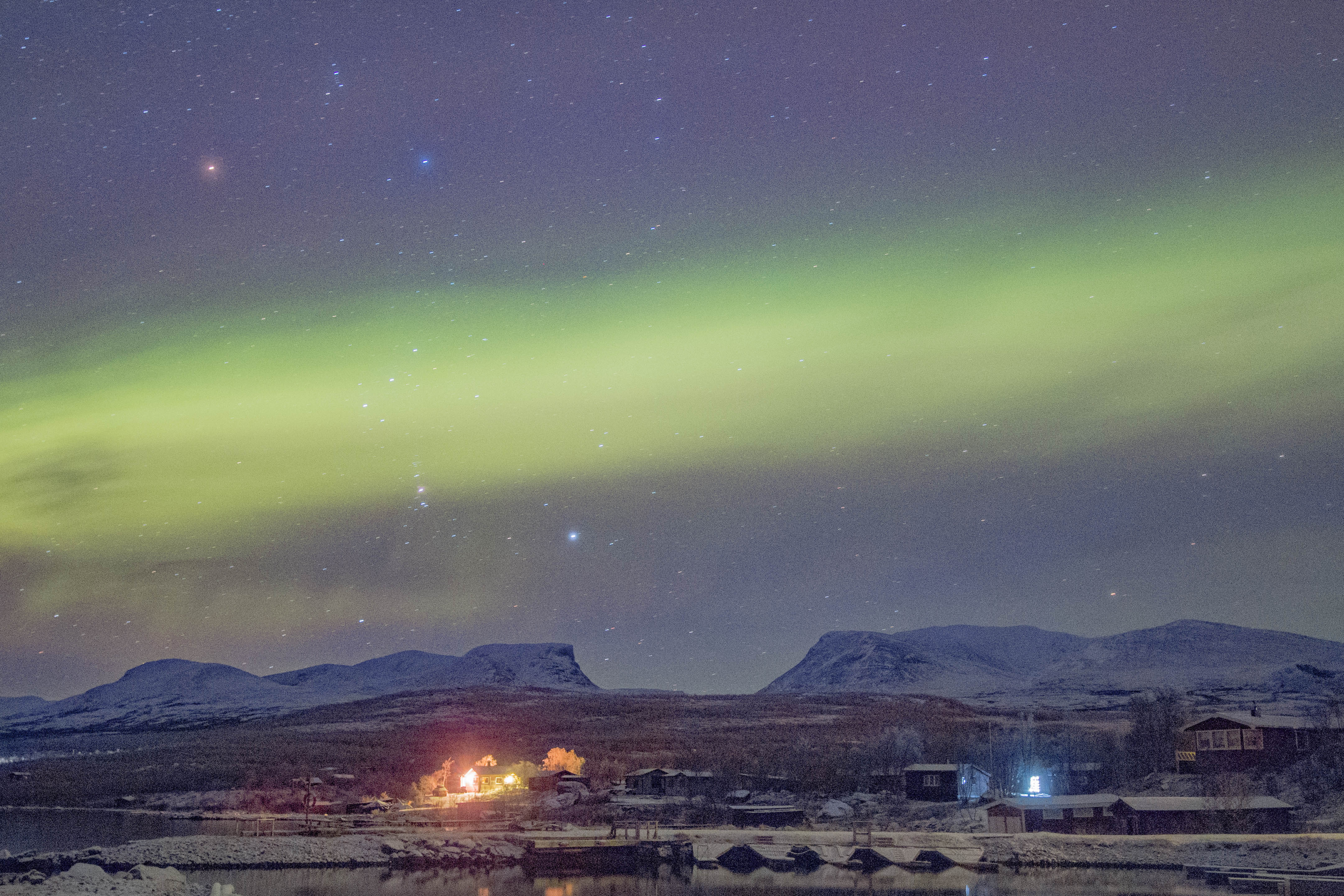
An auroral cloud covers the constellation Orion above the landmark gap in the mountains known as the “Gates of Lapland”
Abisko, Sweden
16 Nov 2015
EOS 60Da with EFS 10-22mm(10mm)
30 seconds, f/4.5, ISO 1600
previous | nightscapes index | next


An auroral cloud covers the constellation Orion above the landmark gap in the mountains known as the “Gates of Lapland”
Abisko, Sweden
16 Nov 2015
EOS 60Da with EFS 10-22mm(10mm)
30 seconds, f/4.5, ISO 1600
previous | nightscapes index | next
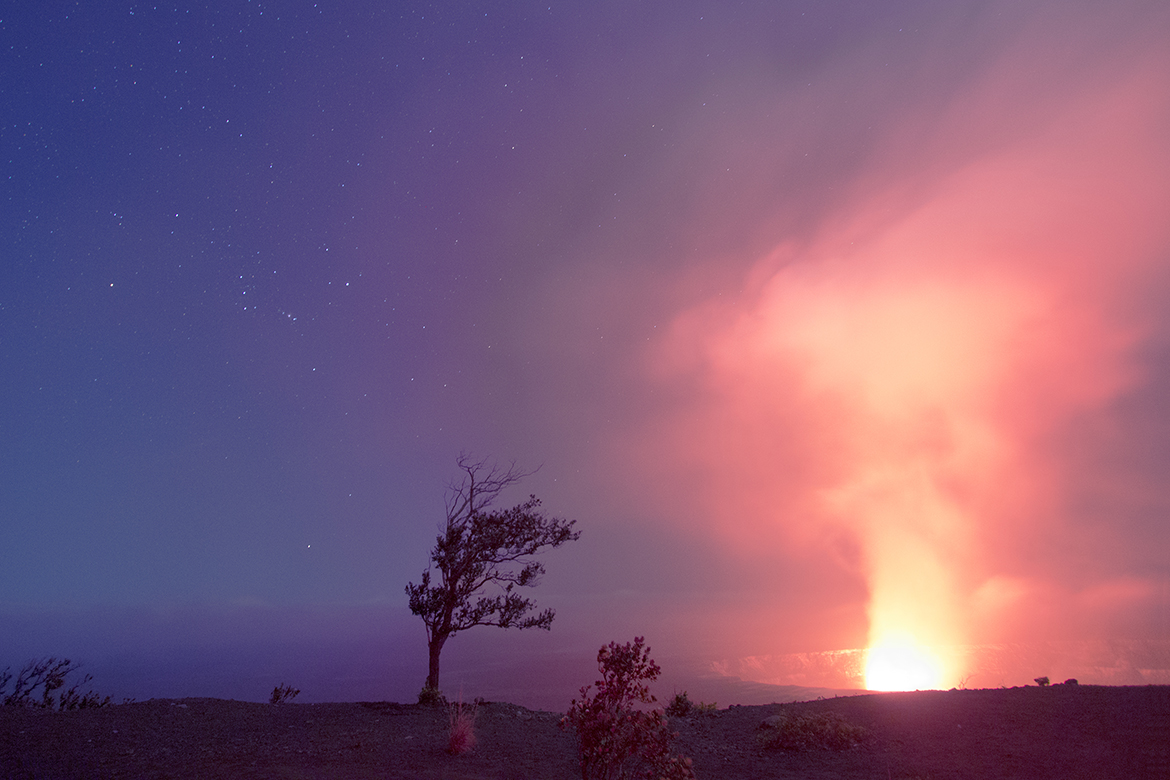
Kilauea is an active volcano on the Big Island, Hawaii, and the central feature of Volcano National Park. In the previous years there had been lava flows from vents further down the slopes of the edifice, but the crater at the top maintained a relatively stable pool of molten rock and gas emissions, stable enough that roads, trails, and a visitor center were constructed along the rim for visitors to enjoy and learn from.
The visitor center was very popular, especially at night, and on this evening we enjoyed the spectacle of a lake of hot lava, along with many others that overflowed the visitor center parking lot. Park rangers gave presentations as we watched the boiling cauldron emit a plume of gases and steam. As I prepared a camera on a tripod, one of them made a suggestion that I could step beyond the tourist line and find a position along the crater wall that would offer a more photogenic view.
I was very appreciative of this implicit permit, and soon found a position along the trail where I could include the fiery exhalation of the lake of lava, a tree that had survived these conditions for its lifetime, and a view of the sky that included the constellation of Orion.
Volcano National Park, Hawaii
28 December 2014
Canon EOS 60Da 10-22mm (10mm)
30 sec, f/4, ISO 800
previous | nightscapes index | next
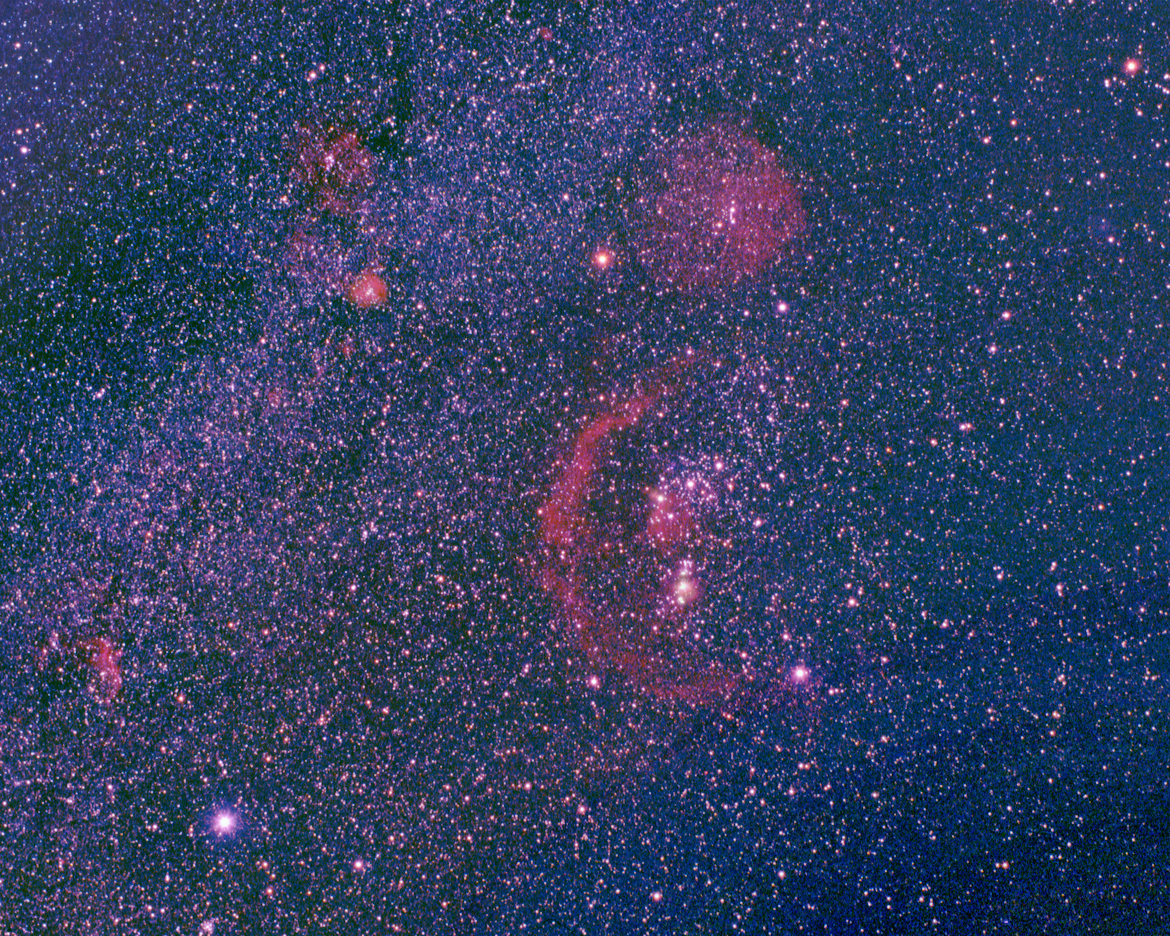
The constellation Orion is a distinctive pattern in the winter sky. Look for the three-star belt, with another three-star sword hanging from it. Here he is with some of his less visible friends. The large red arc is Barnard’s Loop, which encircles the Orion Nebula (lower of the two red areas) and the Horsehead and Flame Nebulas.
Betelgeuse is the red giant star at Orions shoulder, not to be confused with the circular red Rosette Nebula to the left. The bright blue star at the lower left is Sirius (the Dog Star), the brightest star in the sky, and sailing above it in the blue river of the winter Milky Way is the red wisp of the Seagull Nebula.
Lake Superior shoreline near Two Harbors, MN
March 2004
Pentax 6×7, 55mm, f/5.6
E200 +2 stops, 20 minutes, guided
If you are interested in my occasional contributions to Thor’s Life-Notes, I invite you to follow along.
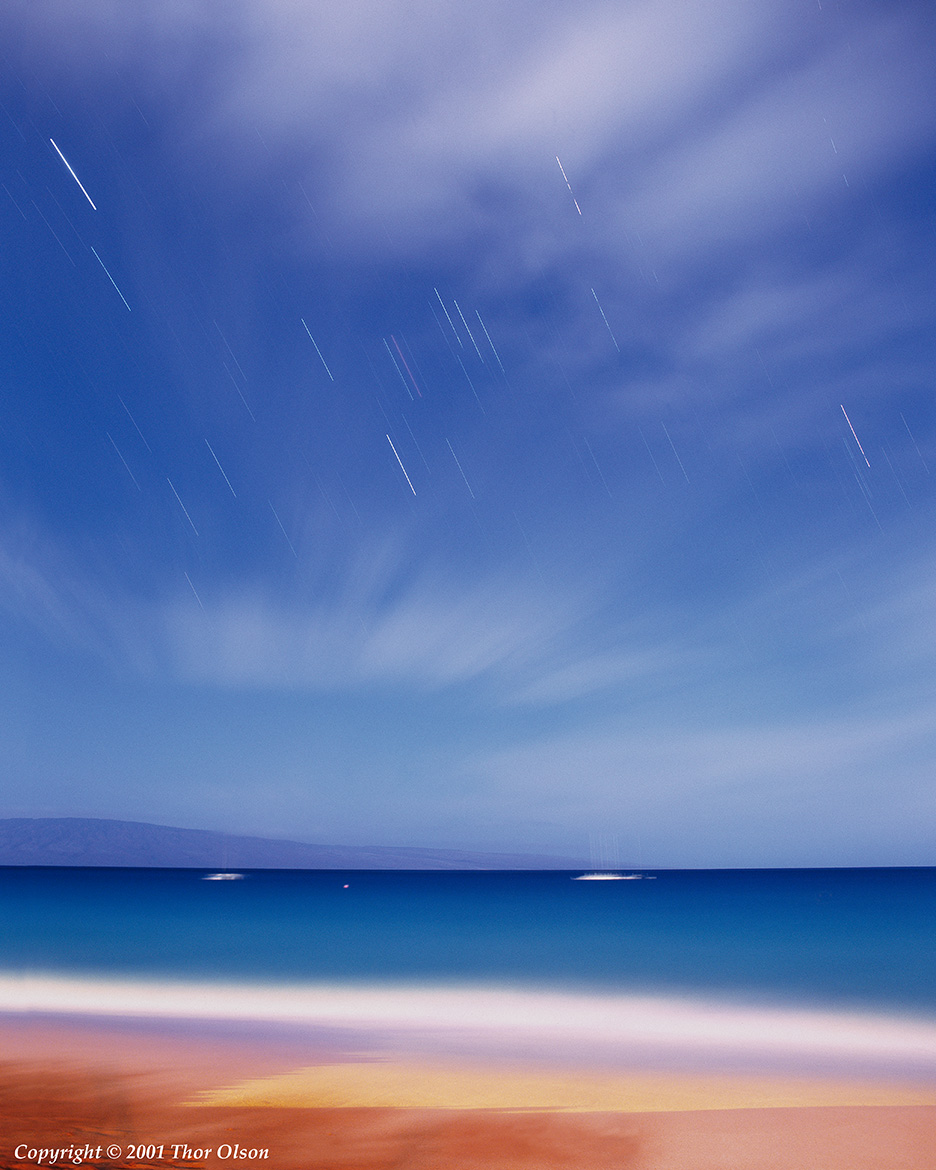
It looks like a daytime picture but there was only the full moon. With enough exposure, what looks like black sky to me becomes sky blue to the film. The dreamy quality is made by the passage of light clouds blowing through during the exposure, and by the cumulative misty effect of waves breaking on the shore. A rogue wave climbs far up the beach and glistens in the moonlight for a moment before sinking back into the sand. A close look will find masts waving as their moored sailboats maneuver against the wind.
The constellation Orion is hiding in the clouds. The three belt stars make a characteristic cat scratch during the time exposure. To the left, undimmed by faint clouds is Sirius, the brightest star in the sky.
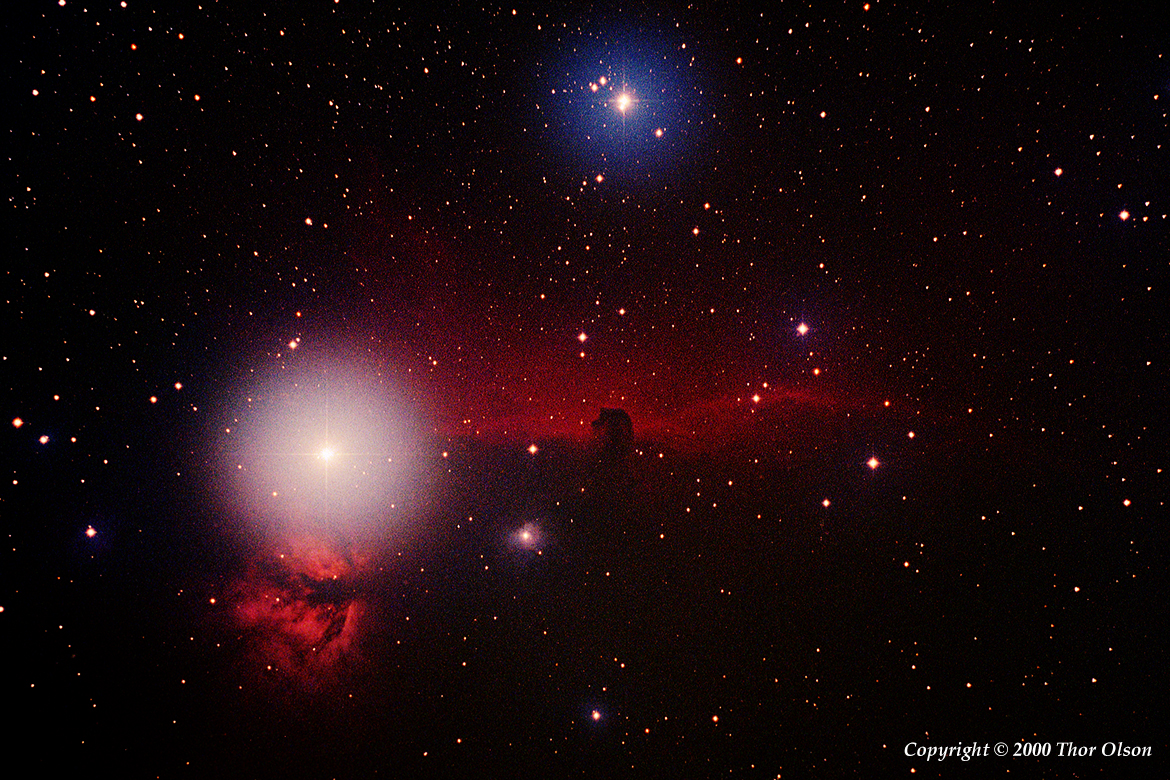
This is a favorite target for astrophotographers. It’s a famous image, but quite challenging to capture, partly because it is only visible during the winter months when Orion the Hunter is up. The weather conditions will always be cold, at least in the northern latitudes, and so winter gear is required.
It is not easy to actually see this target. The nearby bright star, zeta Orionis, is a convenient marker, but its glare easily washes out the faint glow of the Horsehead and another nearby object just below zeta, the “Flame Nebula”.
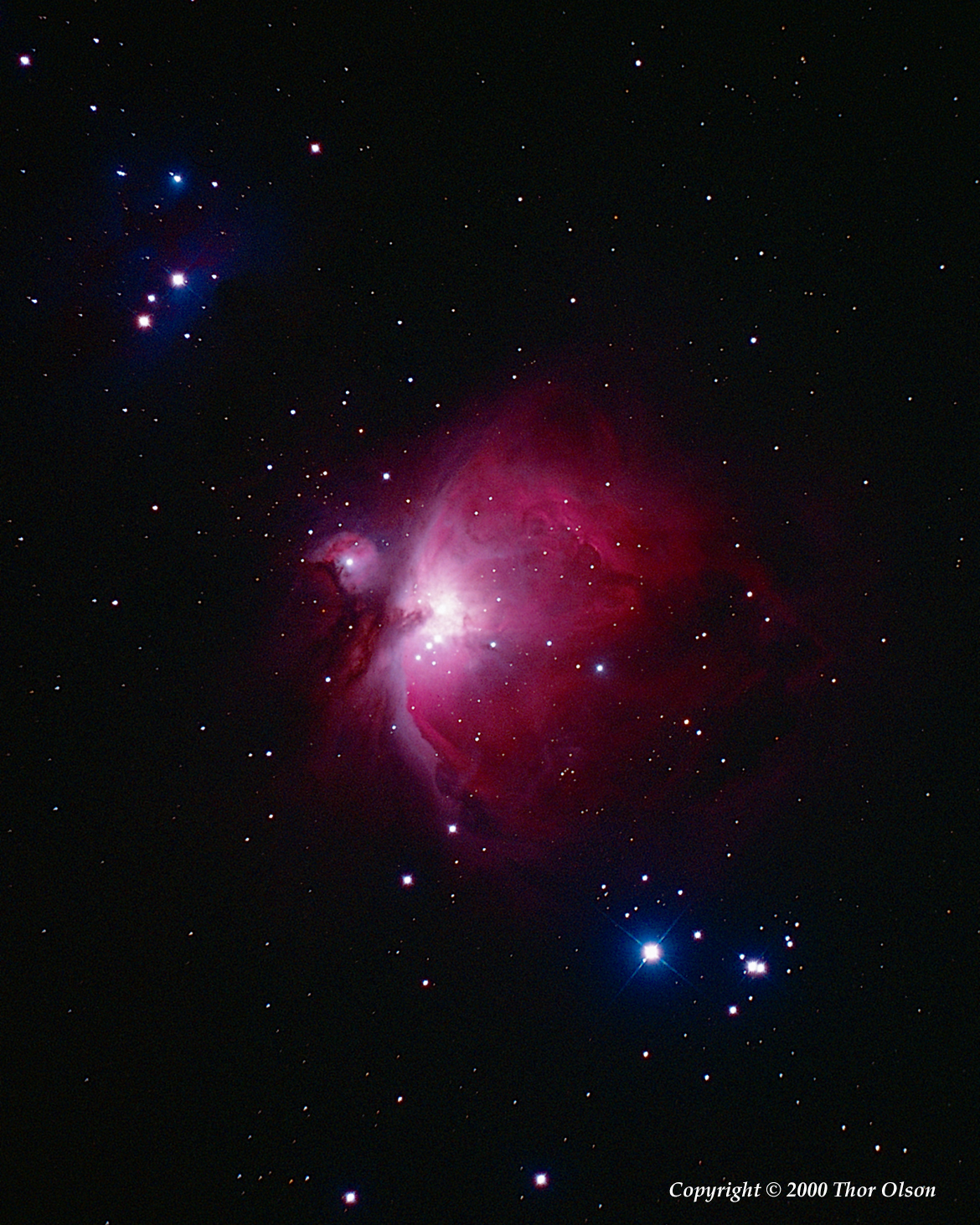
On most winter nights, the distinctive constellation of Orion the Hunter is plainly visible in the southern sky. Orion sports a “belt” from which hangs a three-star “sword”. The Orion Nebula is the smudge of the middle star in Orion’s sword. A closer look at it reveals that it is not a star at all, but a group of stars shrouded in a cloud of dust and glowing gas. This is a stellar nursery where new stars are being formed. As the gas coalesces, it is energized and emits a characteristic red glow, not bright enough to be seen visually, but captured nicely on film.
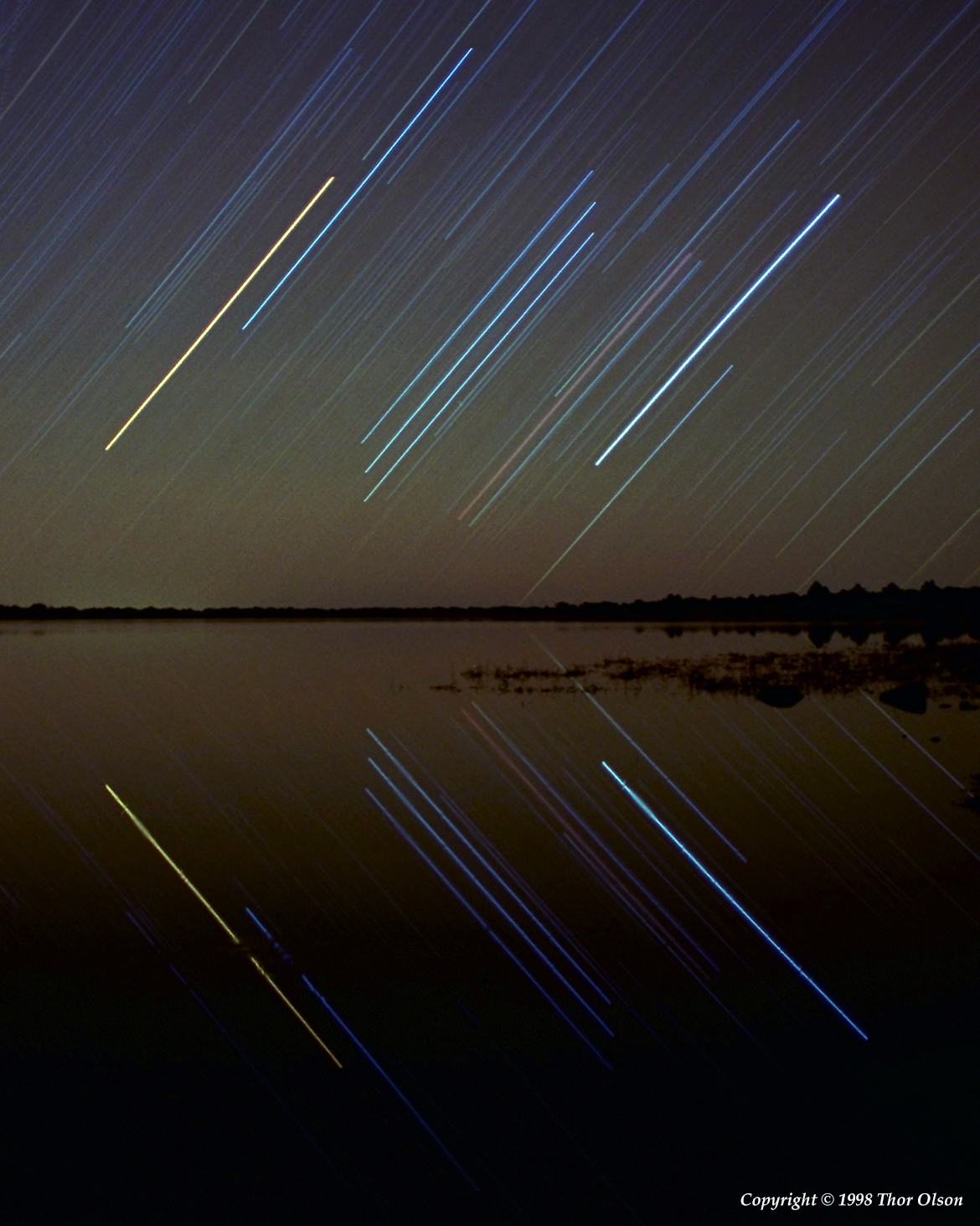
I made an expedition to northern Arizona in November of 1998. It was partly to find out what is involved in transporting photo and telescope guiding equipment to other parts of the world. Although cumbersome (I shipped a 90 lb crate ahead to be available when I arrived), it worked.
On the first night I found a remote site in the high desert. The map showed what looked like paved roads to a fishing lake. Evidently the map notations are different in Arizona; at least there were ruts where earlier vehicles had found their way.
The lake was remarkably calm and I marvelled at the darkness of the sky as I watched Orion rise in the east. I could hear wildlife including coyotes, owls, and yes, ducks. But they were far away and the water remained like a mirror. The sky glow here is not from aurora, but instead from distant Flagstaff, a city with an ordinance to use sodium vapor street lighting. The color is strongly yellow, but easily filtered and removed by the astronomical observatories that are hosted by the town. My film however captures all of it.
Although Orion is spread out into an unrecognizable form, he can be identified by the bright orange star, Betelgeuse on the left, and bright blue star Rigel on the right. The triad of belt stars makes a catscratch-like trail, and you may notice a distinctly red star that is even more obviously red in its reflection. This is the famous Orion nebula, a glowing region of gas and dust where new stars are being born.
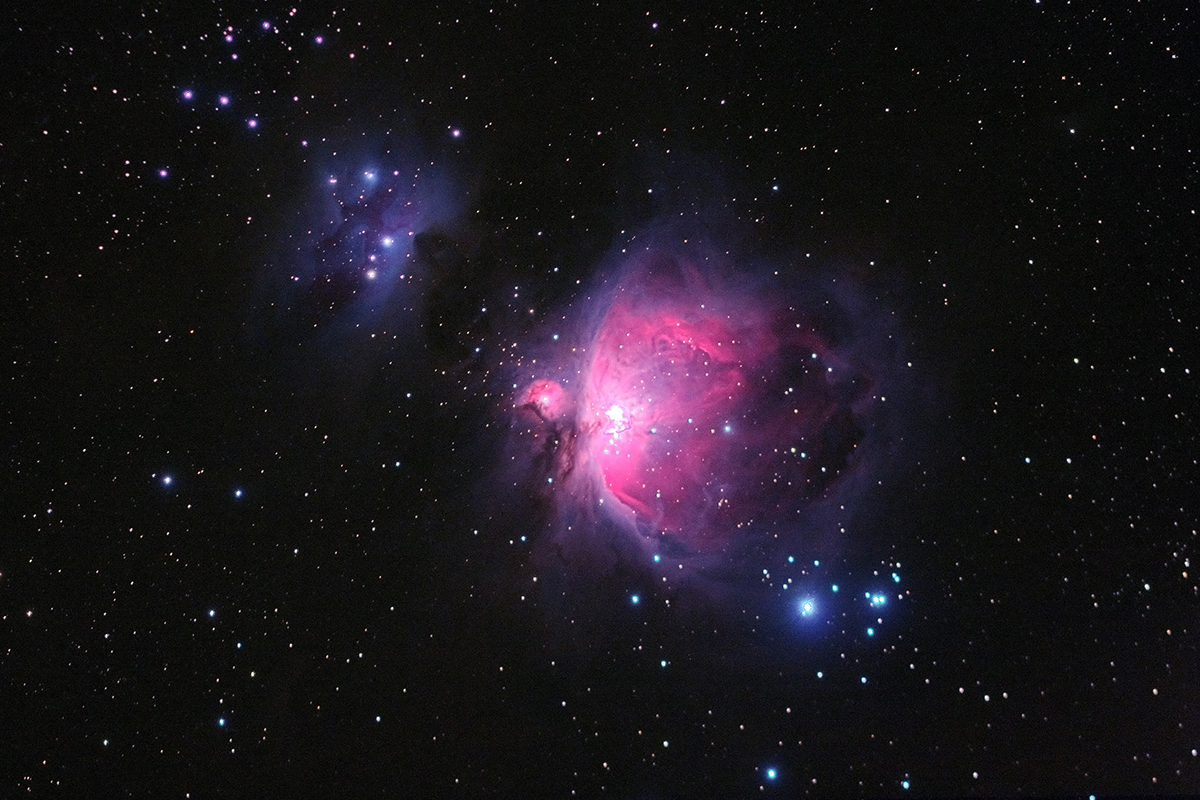
On this day, I manage to travel to Four Corners, a geographic location that is only meaningful to cartographers marking the human-made political bounds of different territories. There is certainly no physical or geographic rartionale behind it, as the view from the constructed concrete platform holding the National Geologic Survey brass benchmark is the same in all directions.
Continue reading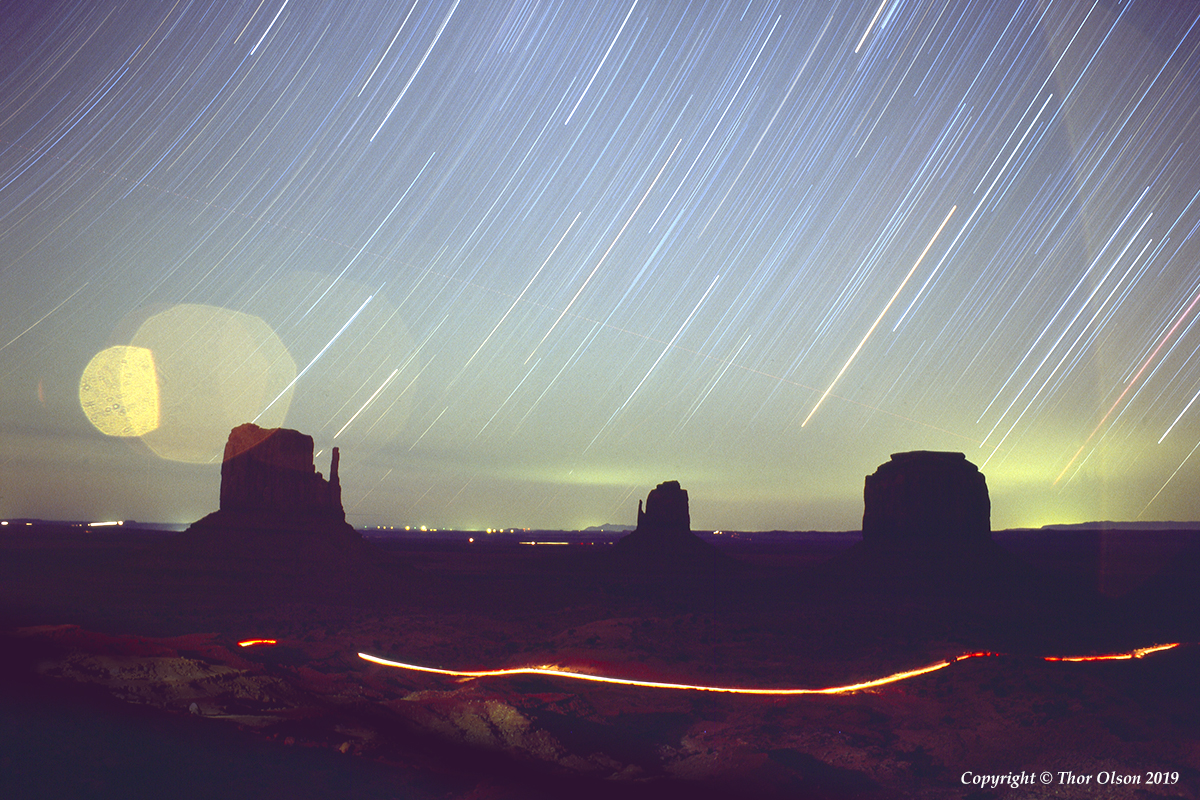
I am staying at the Hampton Inn in Kayenta Arizona. It is not your usual traveler’s stopping place that I have become accustomed to in my business travels. It is an attractive contemporary adobe building, tastefully appointed with beautiful Navajo art and artifacts. Gentle native music is piped to the public areas. An interesting Navaho outdoor exhibit is also well presented. The native American flavor is augmented by modern conveniences—full breakfast, wireless internet, pool, patio, and an attractive and comfortable lobby.
Since the cloudy skies had kept me in, I suffered another full night of sleep. Now, unexpectedly alert at an early hour, I noticed all of these niceties at breakfast while I started planning my day.
I also noticed an older couple, or rather, they noticed me. And for some reason, maybe because I was alone at a table making entries in my notebook, they decided that I needed company.
They were gregarious and garrulous, she a travel writer of twenty years for the Chicago Tribune, still writing columns for various papers, and he an attorney, no longer practicing, both of them skilled with words and language, both widely travelled. They were adorned with native attire: turquoise necklaces, silver wristbands, belt adornments. She wore a flowered dress, hat, and moccasins.
They told me of coming here every year for fifty to replenish their souls, wandering down backroads to old trading posts and remote locations.
In recent years however, they had been warned to avoid certain roads. Drug dealers are unforgiving and have killed police and bystanders alike for reasons that make sense only to them. He (Jim, the lawyer), had once carried firearms for protection, but now doesn’t—not because they’re illegal, but because they’re impotent against the firepower of drug dealers.
This gave me pause as I considered my typical nighttime activities. I should probably avoid remote roads to avoid inadvertently crossing paths with some late night transaction. But that would be restrictive, the best dark sky sites are found on such roads.
I listened to more. They had stories to tell, fascinating facts, history and lore, and each triggered a further story from the other, taking turns to tell them to me. I was quite impressed, and decided to try and follow some of their directions to the local destinations they described.
Among them was the Shonto trading post. The road to it was covered with rippled sand, an advance of the desert onto our human trails. The last section of road down to the valley was a rough rock ledge, blasted from the cliff with spent guard posts—cabled together but eroded and yanked out of their moorings.
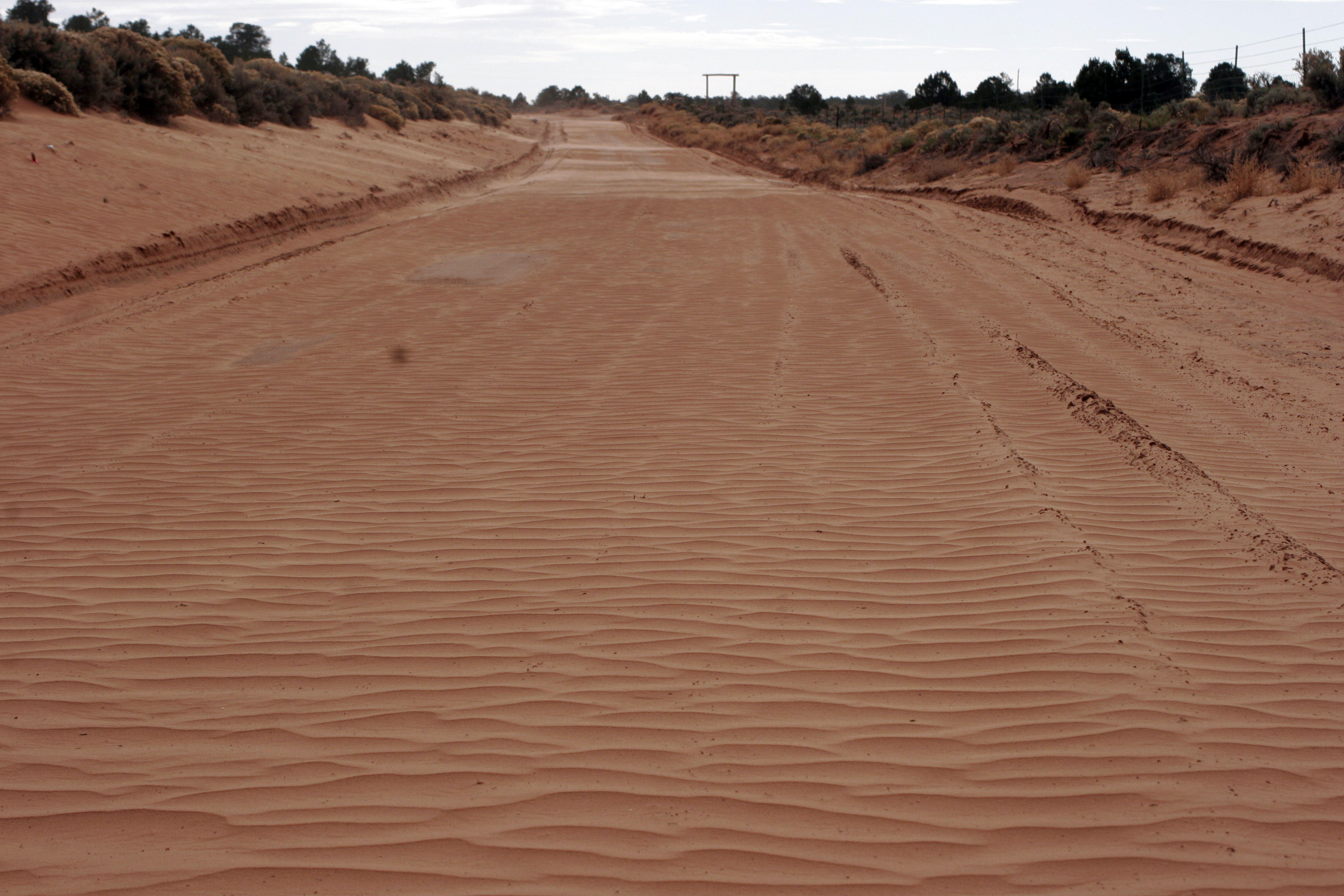
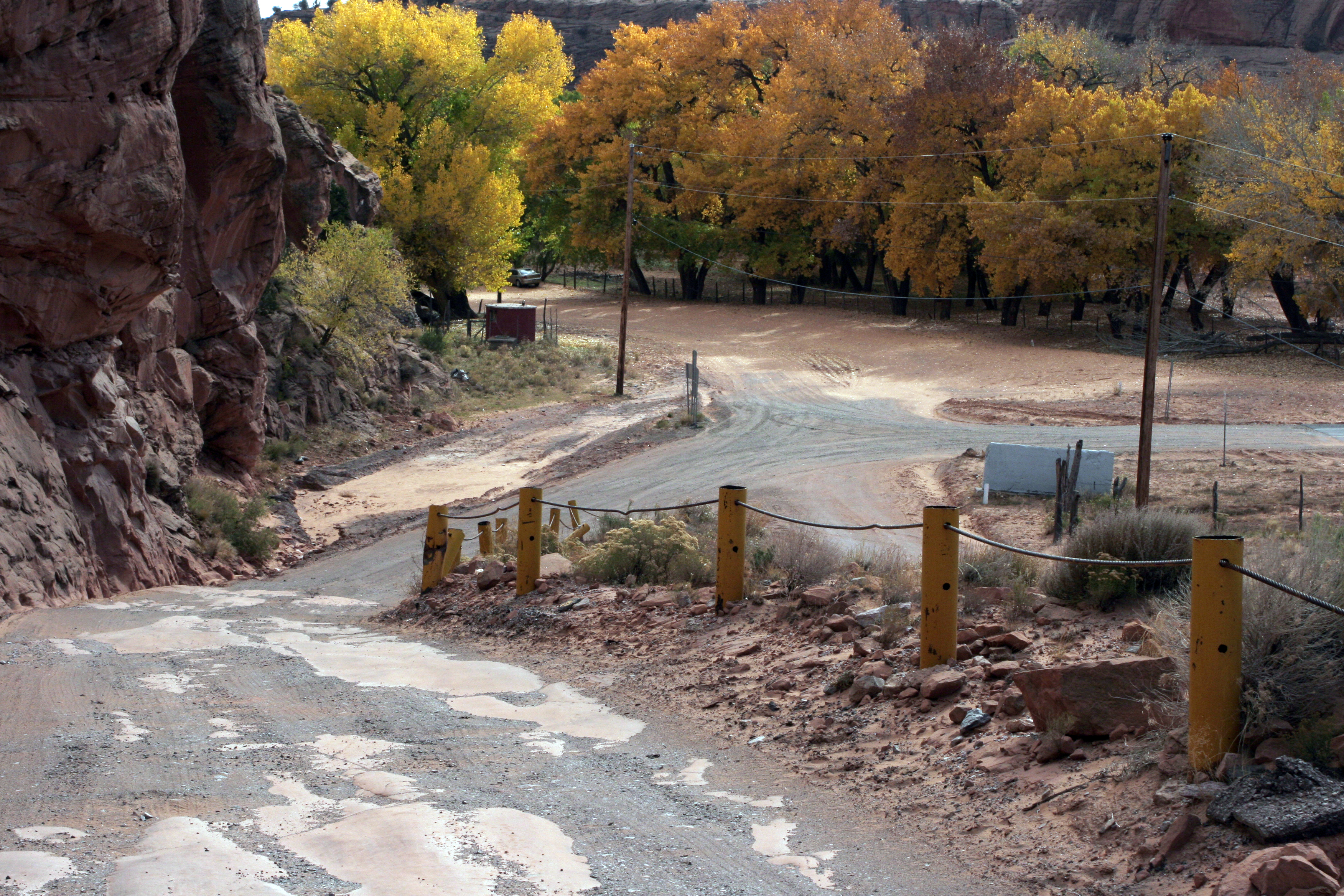
The trading post itself was mostly empty shelves, but provided bread and milk to local customers. When there is nothing else, this is the center of mercantile life and the focus for goods that cannot otherwise be hunted or farmed.
And it was apparent that I stood out from the local customers. One of them, standing outside the trading post sized me up and had to find out “Where are you from, Alaska?” I knew that I would never pass for a local, my complexion and attire was not frequently seen here, but I must really stand out, even from the other tourists!
I returned from my excursion and on the way back encountered the structure that supplied coal cars from the nearby Peobody mine via tall storage elevators. It had been lit up like a giant diamond ramp the night I drove in. The elevators were fed by a conveyor belt from the mine and in turn fed rail cars on a train powered by overhead 500 kilovolt electricity! [Update 2019: the facility is closing due to the diminishing use of coal in the U.S.]
I have plans for tonight. I will test my “twilight exposure model” by taking pictures with my digital camera and comparing with the sun elevation data that I downloaded from the US Naval Observatory. In preparation, I cleaned the image sensor. I did not have the proper tools to do this. When the nearest camera store is hundreds of miles away, one must improvise, so with the turkey baster I had acquired at the local market, I made quick blasts of air to blow off the dust particles. It seemed to work!
As the sun set, I positioned myself to take pictures of the rapidly darkening sky toward the east. I managed to take a few exposures according to my prescribed time schedule and exposure guide, but got distracted by the very young moon to the west. I abandoned the experiment in favor of the beautiful scene behind me.
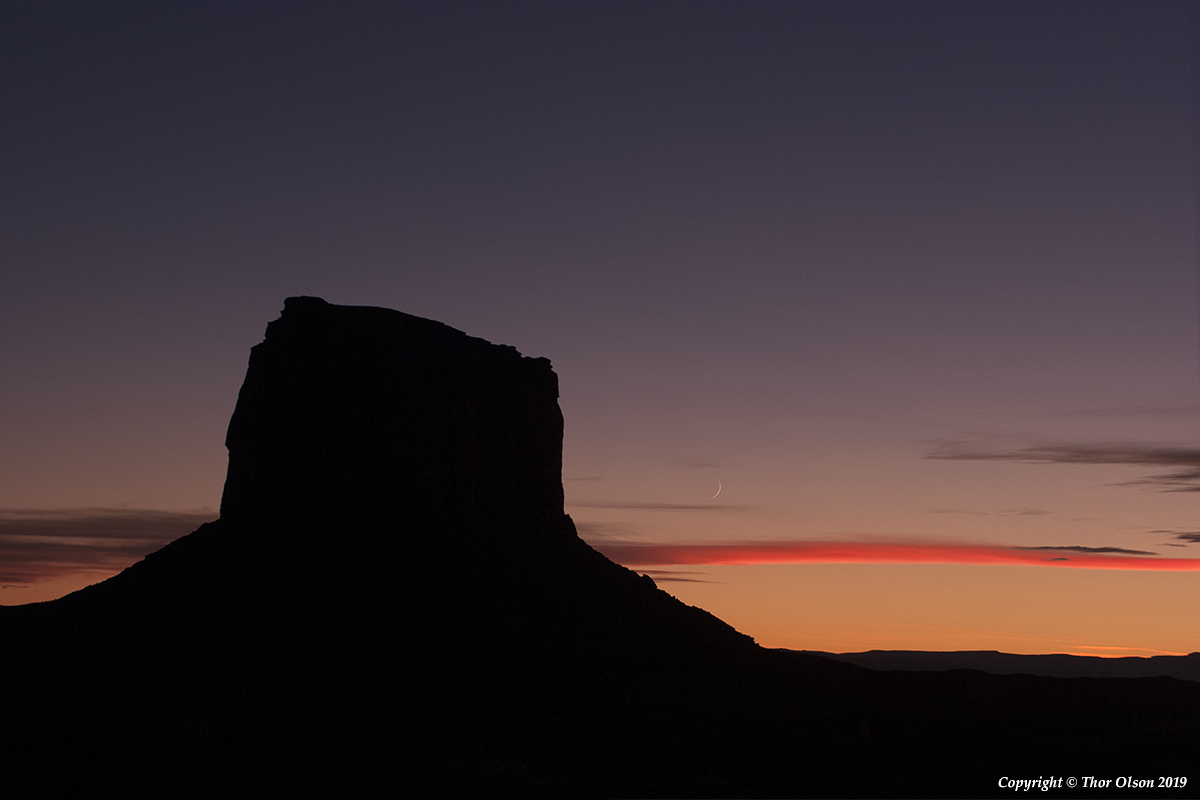
With the sun having set, but the sky in that limbo between civil twilight and astronomical twilight, (dusk and dark), I went to the nearby Goulding’s resort and enjoyed dinner, hoping that the clouds and wind would go away while I refueled.
The clouds dissipated, but the wind continued. When I returned from my dinner break to the campsite (that I had booked for another day), I decided that I should try and find a windbreak so that my telescope would be protected from the image-blurring gusts. It was a short hike to the visitor center, where I found a position on the veranda behind one of the walls where a relative calm protected my tripod.
During the next six hours I was able to take a number of astrophotos through the telescope. The residual wind was still a hassle, finally dying down after 1:00 am. I had two targets, the Orion Nebula and the Cone Nebula. Unfortunately, my tracking skills, even in the reduced wind gust, were not up to the task, and I would later find that the exposures were not stable enough to work with. Nevertheless, it is always good when one can practice the art.
Meanwhile, during the time I busied myself with the details of making these exposures, I had set up my film cameras to record even longer durations. They yielded lengthy star trails over the monuments, which are really only a blip of time compared to their geologic history.
